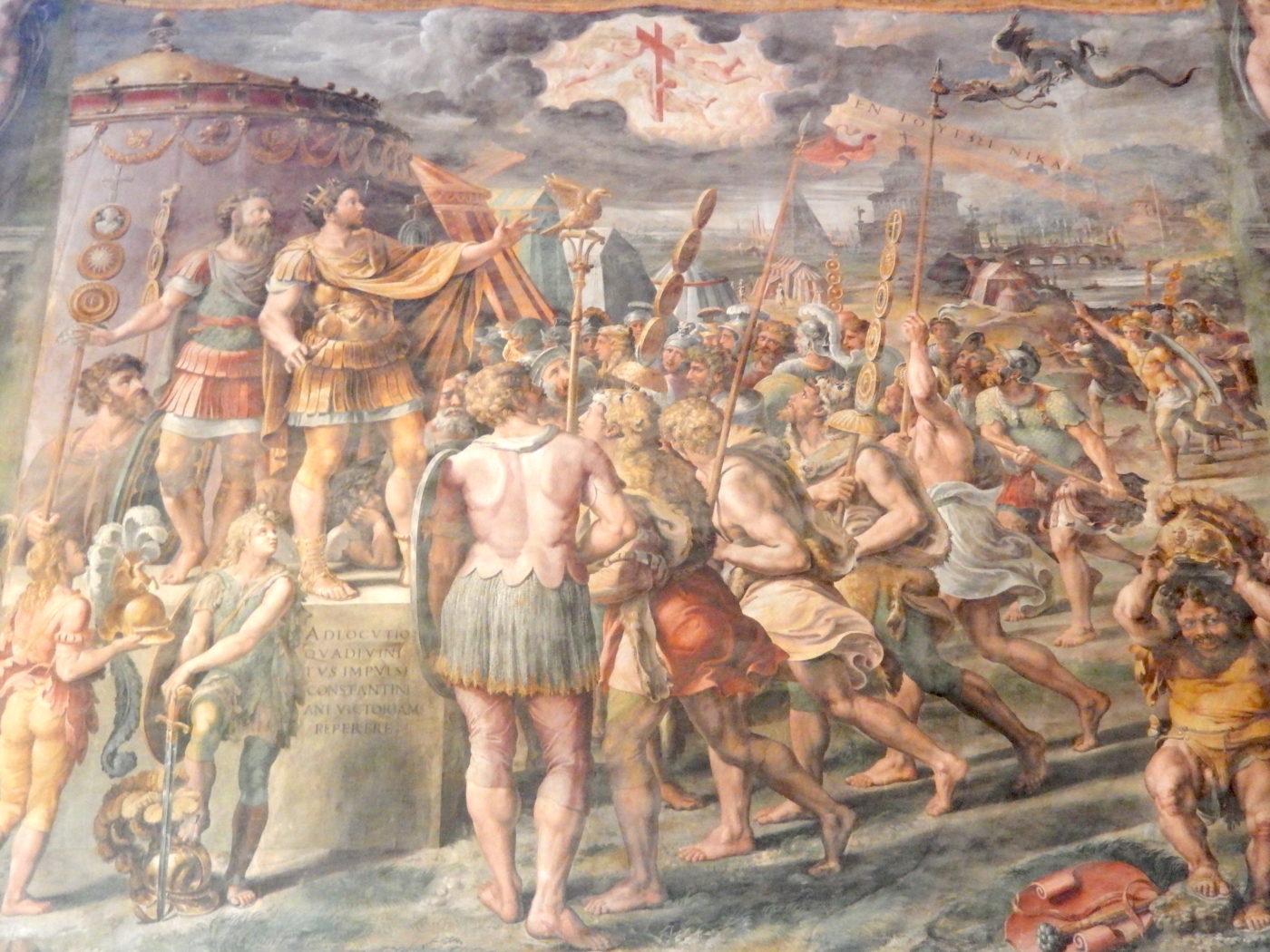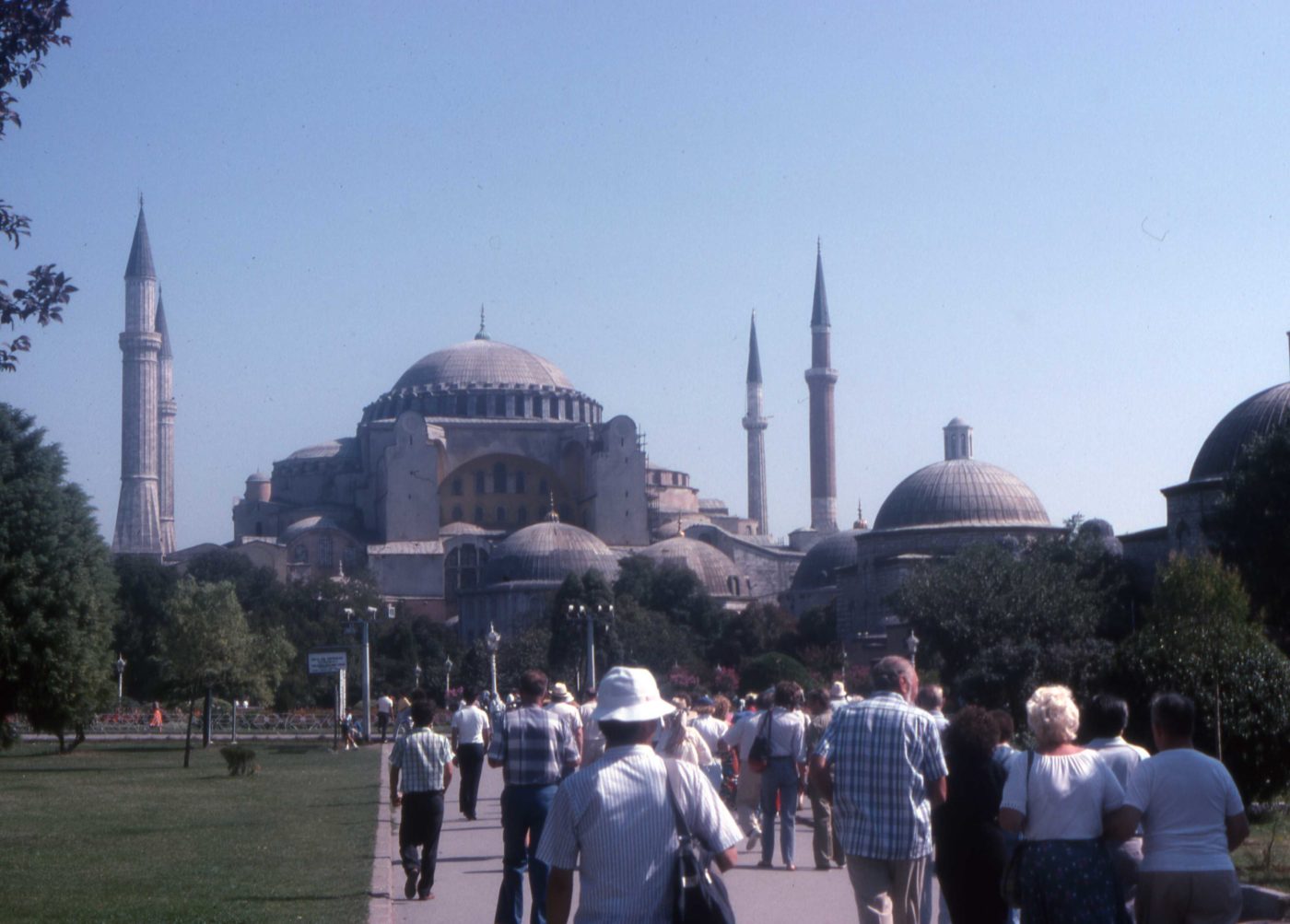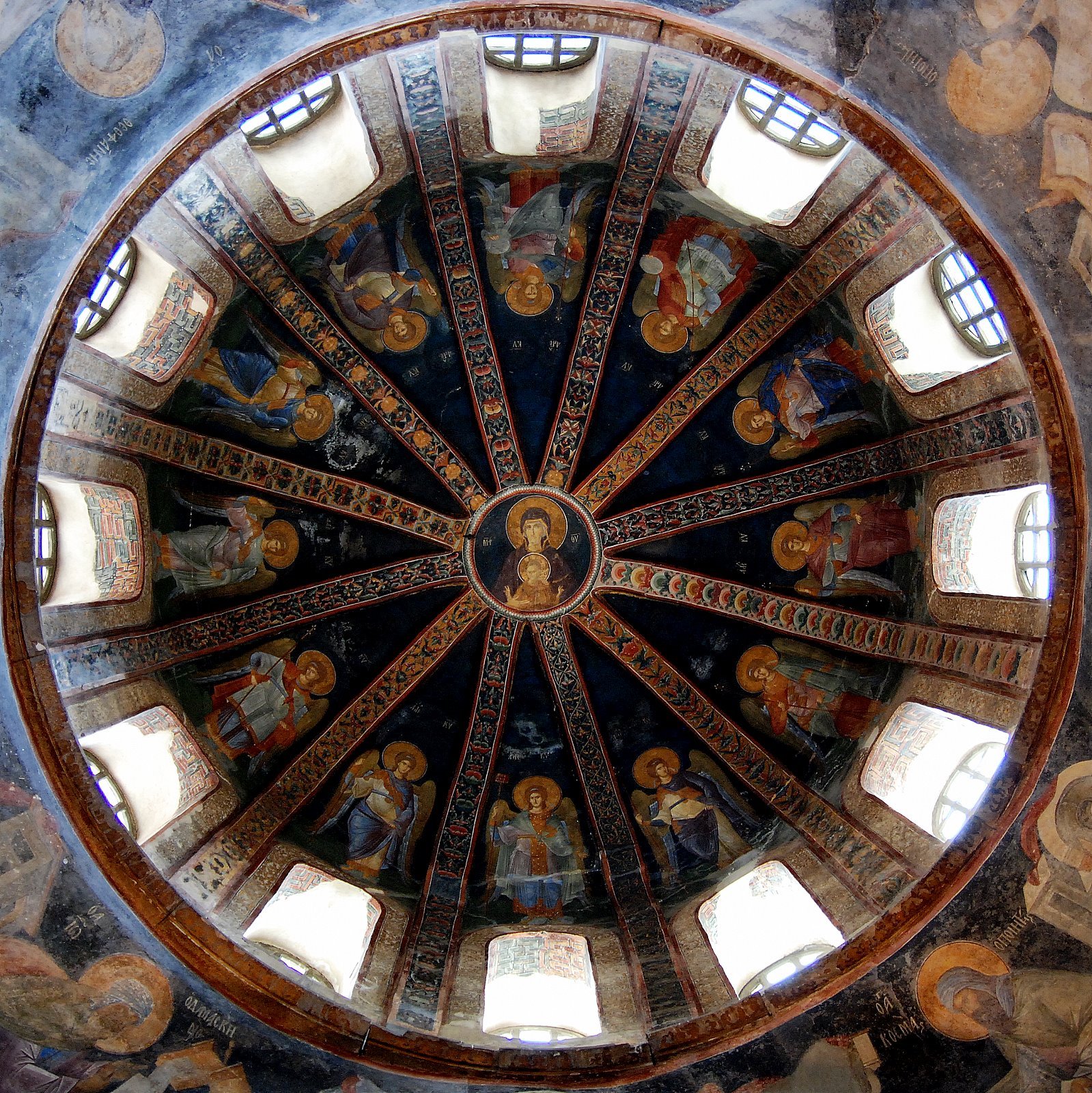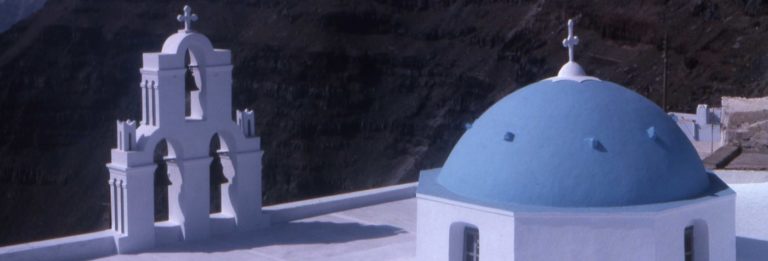This remarkable city is the true junction of East and West. Its history is a testament to how difficult that junction has always been. Start with Istanbul: The Imperial City. Take a look at a map and you immediately understand the military significance of this gateway between Europe and Asia. Istanbul is the only major city in the world straddling the boundaries of two continents. You can see this clearly in the National Geographic Visual Atlas of the World, 2nd Edition: Fully Revised and Updated
Throughout history, this site on the narrowest waterway between the continents has been a prized possession of every aspiring world domineering strategist. It has been a highway for Crusader armies and the heavily guarded bottleneck for controlling the Cold War Soviet Fleet.

This city, founded as Byzantium, (by Greek King Byzas, of course), renamed Constantinople, (by Emperor Constantine, of course), which evolved into Istanbul, (for once, not named for anybody), actually ranks in historic and cultural importance with Rome and Jerusalem. Even today, its population is third in Eurasia, after London and Moscow. However, most Americans are not as familiar with it, because its language and history have not been as accessible to us over the last several centuries. The story begins with Byzantium: The Surprising Life of a Medieval Empire. Brush up on the Ottoman Empire and you’ll have a sense of the history we missed!
As young Constantine was rising through the ranks of Roman military politics, the empire was split between West (Rome) and East (Byzantium). It was during this time, circa 312 CE, that Constantine was reported to have had his vision of the Cross while taking out his competition for Caesar of the West.
A decade later, he had vanquished the Caesar of the East and consolidated the Empire. To learn about this central figure in European history, see The Life and Times of Constantine the Great. He moved east and, by 330 CE, he had renamed the city.
Aside from his various military campaigns, Constantine stayed in his favorite city until his death. This turned out to be a good thing. When the western capital, Rome, fell to the Visigoths, around 410, Constantinople remained a seat of politics and culture. This is described very well in Lost to the West: The Forgotten Byzantine Empire That Rescued Western Civilization.

After his battlefield conversion, Constantine issued the Edict of Milan, granting Christian tolerance throughout the Empire, in 313. This was an immensely important moment in the history of Christianity, as this greatly reduced the persecution of the church throughout the Empire. Here is a scholarly take on the events: History of the Church from the Edict of Milan, D. 313, to the Council of Chalcedon, a D. 451 (Classic Reprint)
After moving to Byzantium, Constantine tried to get the Eastern and Western Christian leaders to resolve differences about the nature of the divinity of Jesus. However, interpretations and teachings varied widely. The Nicene Creed, (325 CE), was meant to resolve the dispute. However, differences continued as the separate church bases of power in Rome and Constantinople continued their squabbles, finally erupting in the Great Schism in 1054. This was the effective beginning of the Eastern Orthodox Church as a separate Christian entity from the Catholic Church. The dispute remains to this day. Constantinople is still the seat of the Orthodox Patriarch. Pick up His Broken Body: Understanding and Healing the Schism between the Roman Catholic and Eastern Orthodox Churches.
After Constantine, the next important monarch of the city was Justinian the Great, taking over around 527 CE. Though based in Constantinople, he managed to restore Rome to the Roman Empire one last time. The religious rivalry between the two cities was revived, and Justinian was the champion of the Orthodox faith. (Justinian: The Last Roman Emperor)

While fighting wars all around the Mediterranean, Justinian managed to find time to build Hagia Sophia, the most incredible church in the world for its time. It was an important architectural accomplishment with its massive dome. For almost a thousand years, until Seville cathedral was completed in 1520, it was the largest cathedral in the world.
When Justinian built Hagia Sophia in 537 CE, it was intended as a center for the Orthodox faith. The name, often confused as “St Sophia” actually means “Shrine to the Holy Wisdom of God.” It remained that way, (with a brief interlude related to the Fourth Crusade in 1204 CE), until the city was conquered by the Ottomans in 1453 and it was transformed into a mosque.
Today Hagia Sophia is a museum where prayer is not allowed (to avoid controversy). The interior of the church has Byzantine mosaics that probably inspired much of the work at St. Mark’s in Venice, as well as the great Basilica di San Vitale in Ravenna, and the beautiful Norman chapels in Sicily. There are major Islamic text panels in the main vestibule that reflect the contentious history of the structure. Here’s a quick primer: Hagia Sophia (St. Sophia Church – Ayasofya Museum) in Istanbul.
The city remained one of the largest and wealthiest cities in the world until it was trashed by the knights of the Fourth Crusade in 1203-04. Remember that this was just 50 years after the Great Schism. The Roman Christians might have been trying to teach the Eastern Orthodox Christians a lesson. The Fourth Crusade and the Sack of Constantinople would have lasting implications. Constantinople weakened until the Ottomans finally laid siege and took control in 1453.
The demise of the Christian city caused a brain drain of intellectual and cultural talent, many of whom went to the capitals of Western Europe. They brought with them the heritage of Greek culture and humanistic ideas and may have helped spark the Renaissance.
It took World War I to finally end the Ottoman Empire in 1922, when the Republic of Turkey rose from its ashes. However, 500 years of Muslim influence transformed the city into one of the pre-eminent Islamic capitals of the Middle East. It all started with an upstart named Osman, Osman’s Dream: The History of the Ottoman Empire.
Sultan Mehmed II built the Topkapi Palace and the Grand Bazaar, restoring the city as a symbol of Islamic power. Suleiman the Magnificent, (1520-1566), took the city and the empire to its cultural and political height. His story is important to students of today’s Islam: Suleiman the Magnificent. His most enduring landmark is the Sultanahmet Mosque, known as the “Blue Mosque” from the hue of its stone. It is a stunning statement of Islamic worship, completed in 1617. Its interior is a combination of stained glass, oriental prayer rugs, inlaid semi-precious stones, and calligraphy. See Sultan Ahmed Mosque (Blue Mosque) in Istanbul
.

Another Byzantine Church/Museum worthy of a visit is the Kariye Museum/Monastery of Chora. (shown above) Similar to Hagia Sophia, the church was originally Christian, then, converted to a mosque. The vivid Christian mosaics have been mostly restored. For an introduction: Chora Monastery (Kariye Museum) Church of the Holy Savior in Chora, Istanbul.
Istanbul represents a great place to pick up souvenirs you might not find in European cities. The Grand Bazaar is a highlight for visitors, with brass and carpets at the top of a shopper’s list. It might be good to brush up a bit on carpets and prices back home before you leave. Bargaining is a way of life and is expected. I have two modest carpets from my trip there, and one indelible memory of the process of buying them.
Sailing into Istanbul ranks up there with sailing past the Statue of Liberty or under the Golden Gate Bridge. You want to be port (left) side on top deck to take in the panorama of the mosques, minarets, and the Golden Horn as the ship enters the harbor.
Take as many guided, interpreted tours as you can stand. It’s a fascinating place with much history you have never been taught. And a whole bunch of Sanskrit signs you have no prayer of understanding!






